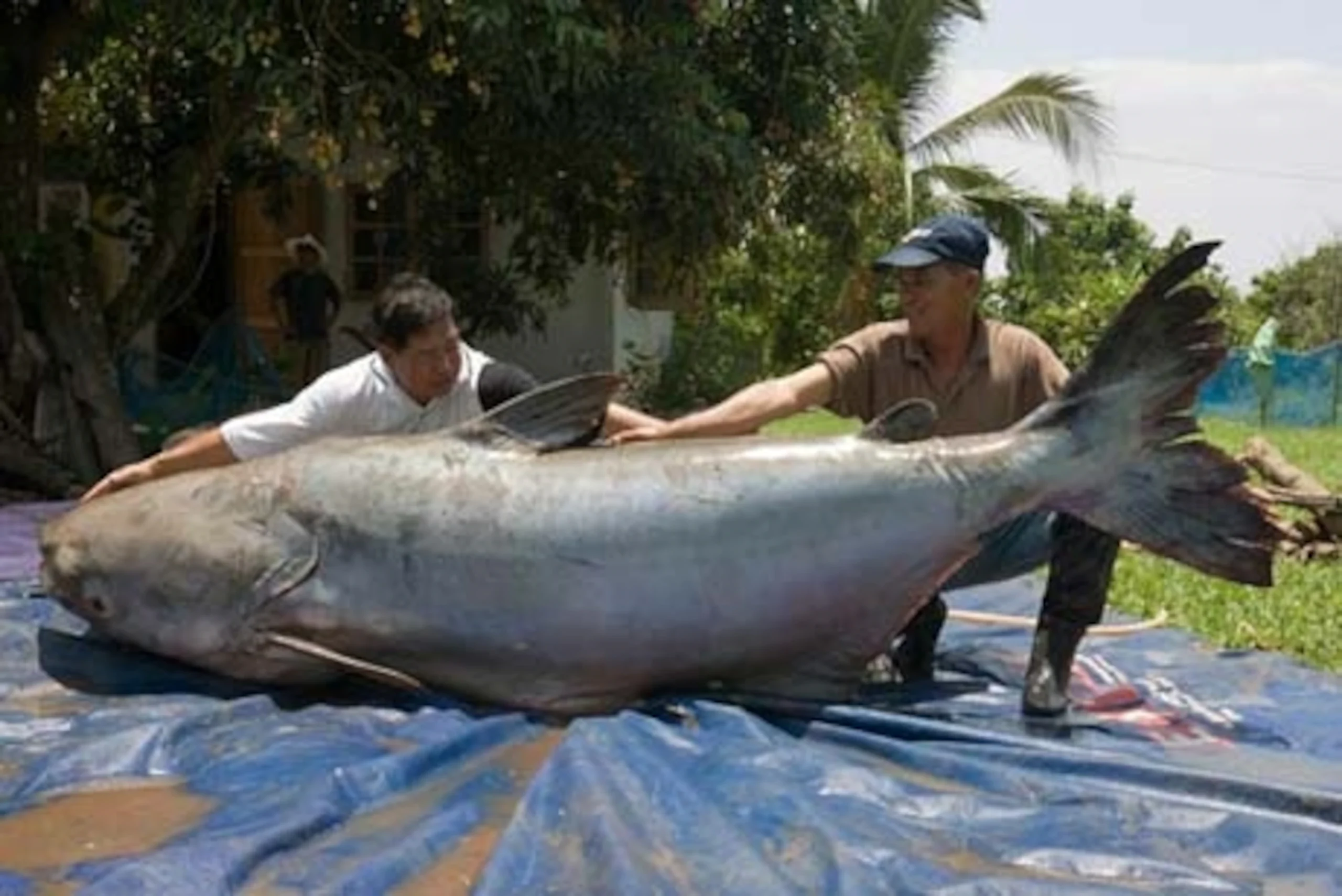Here is a picture that has been widely distributed throughout the internet and you are probably wondering if this is a hoax or real. Well unlike just about every other amazing photograph that makes these rounds this one just so happens to be real!
This one weighed in at an incredible 646 pounds! Widely reported as the largest total freshwater fish ever recorded. Well, take a good look because these magnificent creatures may not be around much longer. They are endangered and hardly any are ever caught anymore.
The only known breeding grounds of these fish in Thailand were destroyed by dynamite for some kind of navigation project in 2003 and now Cambodia is the only place where these fish are caught with any regularity. Research is being done there and hopefully, some sort of controls will be placed on fishing to allow these fish to survive.
Habitat and Distribution
The home of the Mekong giant catfish is only found within the Mekong River and streams branching off of it. In the past, they could be seen from Vietnam all the way to southern China, but nowadays their community is confined to the lower portion of the Mekong Basin, including regions of Cambodia, Laos, and Thailand.
These enormous fish inhabit the deep pockets of the river, where they travel great distances when it’s time to reproduce. Their preferred living spaces consist of enormous, slowly flowing rivers with sandy or muddy ground, which are increasingly facing dangers due to human behaviors like erecting dams and taking too many fish from the waters.
Challenges and Preservation
The Mekong giant catfish faces many hazards that have brought about a drastic drop in their numbers. Taking too many fish is a big problem, as people often catch these creatures because of their large size and desirable meat. Erecting dams and other man-made structures has separated where they live, blocking their travel paths and wiping out their breeding areas. Deterioration of their environment and pollution make things worse still.
Researchers guess the community has shrunk by about 90% just over the prior 20 years due to such hindrances jeopardizing their survival. Efforts are underway to protect this species and restore habitats to sustain what remains of their once mighty numbers.
Efforts to conserve the species include breeding programs and the release of captive-bred specimens into the wild. In Thailand, local communities and authorities have established agreements to halt the capture of these fish and protect critical habitats. Despite these measures, illegal fishing continues to pose a threat. Conservation organizations are working on regional management plans to ensure the survival of this species
Unique Characteristics
Some members of this species grow over 10 feet in length and outweigh small cars. Even more bizarre for a catfish, they don’t have any pearly chompers like their cousins. Instead, they live a peaceful herbivore life nibbling algae and water plants.
This plant-powered diet is odd among big freshwater fishes that often like more variety besides greens. With their enormous statures and unusual preferences, these standout swimmers truly are peculiar specimens within the wildlife.
Current Status
Despite attempts to protect the Mekong giant catfish, the road ahead for these leviathans stays unclear. The International Union for Conservation of Nature, which tracks wildlife threats worldwide, has branded them “critically endangered” – the highest risk category.
Meanwhile, they gained protection under a United Nations treaty policing endangered species trade across borders. But habitat loss and illegal poaching present stubborn obstacles. Destruction of homes and stealing fish continue chipping away at these behemoths’ dwindling numbers.
Still, all is not lost – growing attentiveness and teamwork amongst conservation groups kindles a spark of optimism. With persistent efforts to save habitats and enforce laws, perhaps one day children will know the wonder of encountering a Mekong giant catfish in the waters once more.

